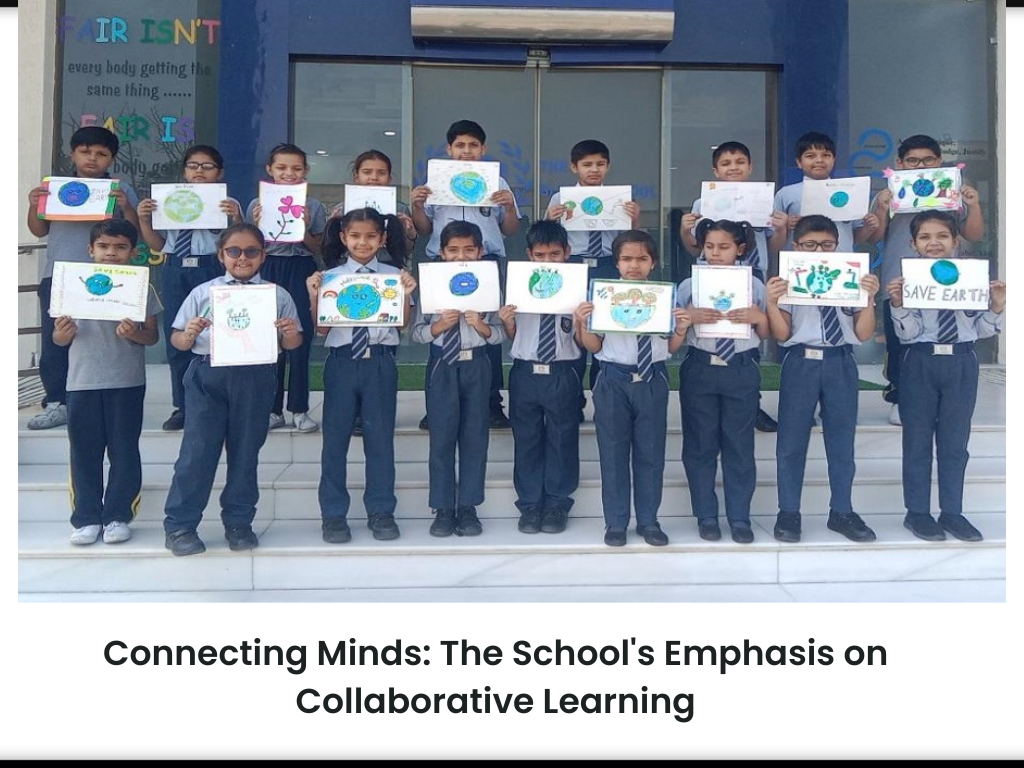Introduction
In today’s rapidly evolving world, success is no longer solely determined by individual knowledge and skills. The ability to collaborate effectively has become a crucial attribute for personal and professional growth. Recognizing the significance of collaborative learning, our school places a strong emphasis on fostering an environment where students can connect minds, exchange ideas, and engage in collective problem-solving. In this article, we will explore the benefits and strategies of collaborative learning at The Star Global School, one of the best school in Rohtak highlighting how it prepares students for the challenges of the modern world.
Understanding Collaborative Learning
Collaborative learning is an educational approach that encourages students to work together in groups or teams to achieve shared goals. It promotes active engagement, critical thinking, communication, and interpersonal skills. By collaborating with their peers, students gain a deeper understanding of the subject matter, learn from different perspectives, and develop valuable social and emotional competencies. Collaborative learning also nurtures a sense of community and belonging, creating an inclusive and supportive learning environment.
Creating a Collaborative Learning Environment
At our school, we believe that creating a collaborative learning environment is essential for student success. We prioritize the establishment of a safe and inclusive space where every student’s voice is valued and respected. Classroom setups, seating arrangements, and flexible learning spaces are designed to encourage interaction and collaboration. Teachers act as facilitators, guiding students and promoting a culture of respect, cooperation, and shared responsibility. We recognize that collaboration is not limited to the classroom; it extends to extracurricular activities, clubs, and community engagement opportunities.
Benefits of Collaborative Learning
Collaborative learning brings forth numerous benefits for students. It enhances critical thinking and problem-solving skills, as students learn to analyze complex issues and find creative solutions collectively. By working collaboratively, students develop effective communication skills, including active listening, articulating ideas, and giving and receiving constructive feedback. Collaborative learning also promotes teamwork, empathy, and tolerance, fostering positive relationships among students and preparing them for future collaborations in the workplace. Additionally, collaborative learning enhances student engagement, motivation, and ownership of learning outcomes.
Collaborative Learning Strategies
Our school employs various strategies to promote collaborative learning. Group projects, discussions, debates, and peer teaching are integrated into the curriculum to encourage active participation and knowledge sharing. These activities provide opportunities for students to collaborate, engage in critical thinking, and learn from one another’s strengths and perspectives. Technology tools and online platforms are utilized to facilitate virtual collaboration and extend learning beyond the classroom. Teachers provide guidance and structure, ensuring equal participation, setting clear goals, and promoting effective group dynamics.
Real-World Applications
Collaborative learning prepares students for real-world challenges. In today’s interconnected society, successful professionals are required to collaborate with diverse teams, navigate complex problems, and adapt to changing circumstances. By engaging in collaborative learning experiences, students develop skills that are highly sought-after in the professional world, such as teamwork, communication, negotiation, and leadership. Collaborative learning also cultivates a global perspective, as students collaborate with peers from diverse backgrounds, fostering cultural competency and preparing them to thrive in a globalized workforce.
Assessment and Evaluation
Assessment in collaborative learning goes beyond traditional exams and individual evaluations. Our school employs diverse assessment methods, including peer evaluations, group presentations, and project-based assessments. These methods not only measure individual performance but also assess the effectiveness of collaboration and the attainment of group objectives. By evaluating both individual and collective achievements, students develop a comprehensive understanding of their strengths and areas for improvement. Assessment in collaborative learning emphasizes the process, highlighting the development of collaboration skills alongside academic outcomes.
Conclusion
Collaborative learning is a cornerstone of our educational philosophy. By fostering a culture of collaboration, we empower our students to become active participants in their own learning, preparing them for the challenges of the modern world. Through collaborative learning experiences, students develop essential skills, gain a global perspective, and become effective contributors to their communities. At The Star Global School, ranked amongst the top schools in Rohtak, we are committed to nurturing collaborative mindsets and equipping our students with the tools they need to thrive in a collaborative and interconnected society. Collaborative learning is not just a strategy; it is a mindset that prepares students for success in their personal and professional lives.


